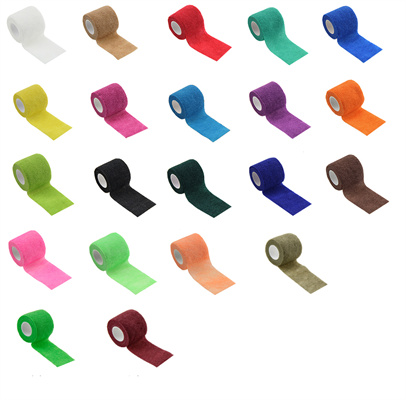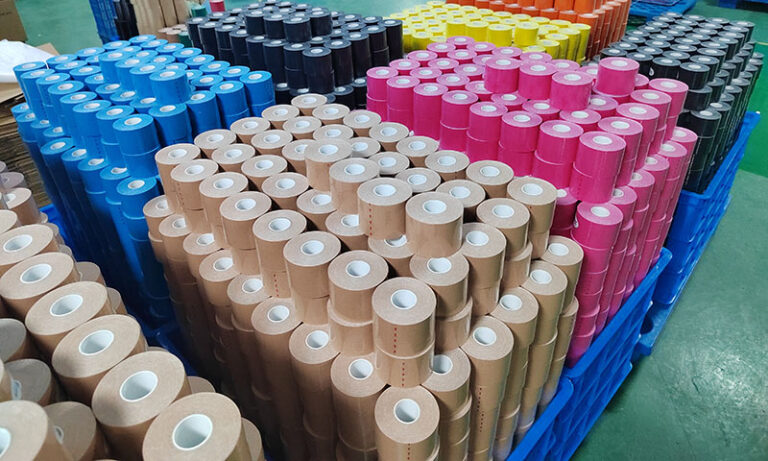A cohesive support bandage is designed to provide you with an all-around protection that is ideal for athletes who are involved in activities like running, cycling, and weightlifting. This article will give you a bit of background on the features of these types of bandages, as well as some helpful information about how to make them work best for your needs.
What is a Cohesive Support Bandage?
A cohesive support bandage is a type of bandage made of fabric and adhesive that is designed to be sticky and stay in place. They are often used to reduce swelling, pain, and redness. A cohesive support bandage should be applied as soon as possible after an injury to help reduce the amount of bruising and swelling.
To use a cohesive support bandage:
- Apply the adhesive side to the wound.
- Wrap the bandage around the wound several times, making sure it is tight but not too tight.
- Leave the bandage on until it has adhered to the skin.
- Remove any wrinkles or creases from the adhesive side of the bandage with a warm cloth before applying to another area .


How to Get the Most Out of Your Cohesive Support Bandage?
If you’ve recently been injured, the first thing you should do is take a look at your bandage to see if it needs to be changed. If the bandage is dirty or there are any tears in it, it will need to be replaced. If the wound does not seem to be worsening and the bandage appears to be secure, you can continue using it as is.
The next step is to figure out how you want to use the bandage. You can secure it around your entire arm or just around your injury. The most important thing is that you keep the area tight so that the bandage doesn’t move.
You should also make sure that the adhesive side of the bandage is facing your skin. This will help keep it in place and prevent any leaks.
Uses of a Cohesive Support Bandage
If you have a fracture or sprain, using a cohesive support bandage can help to reduce the swelling and pain. It is important to follow the instructions on the package to ensure that the bandage is effective.
Cohesive support bands can be used for a variety of injuries, including:
-Fractures: A Fracture is when the bone has been broken into multiple pieces. Cohesive support bandages help hold these pieces together until they heal properly.
-Sprains: Sprains are when the ligaments that connect your bones have been stretched or torn. This can cause pain and swelling. Cohesive support bands help to reduce this swelling and pain.
–Shin Splints: Shin Splints are a type of injury that happens when your shinbone (the big bone in your leg) doesn’t get enough rest because you’re standing or running too much. Cohesive support bands can provide relief by reducing inflammation and helping keep your ankle stable while it heals

Tips for Using a COhesive Support Bandage
If you’re looking for a bandage that can help support your healing process, a cohesive support bandage may be the best option for you. These bandages are designed to help reduce the amount of swelling and pain that can occur as a result of injury or surgery. Here are some tips on how to get the most out of your cohesive support bandage:
When choosing a cohesive support bandage, be sure to choose one that is properly sized for your wound. Many injuries will require a size medium or large cohesive support bandage, but some wounds may only need a size X-Small or Small. When selecting the size of your bandage, make sure to keep in mind the circumference of your injured area as well.
Once you have chosen the correct size cohesive support bandage, it is important to apply it correctly. To do this, start by wrapping the fabric around your injured area three times. Then, tie it off in a knot so that it is snug but not too tight. Make sure to distribute equal pressure throughout the wrap so that it does not pull on your skin.
If you experience any discomfort while wearing your cohesive support bandage, be sure to remove it and seek medical attention as soon as possible.


Conclusion
A cohesive support bandage is an essential piece of equipment for any wound care professional. It helps to keep the wound closed and prevents infection from spreading, which can be crucial in a situation like a traumatic injury. In this guide, we will discuss the different types of cohesive support bandages and explain how to use them most effectively. Hopefully, this guide will help you get the most out of your cohesive support bandage and make it easier for you to provide excellent wound care to your patients.



